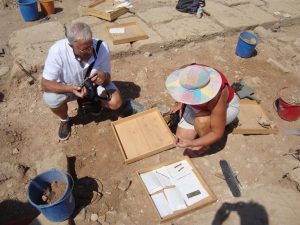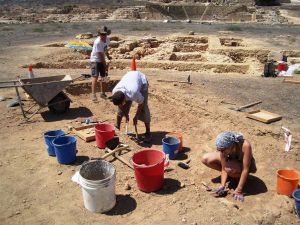Polish archaeologists, who excavated the ancient city of Nea Paphos on Cyprus, discovered the remains of a possible doctor’s office within a destroyed portico. The excavated area yielded bronze and iron surgical tools that are believed to be 2000 years old.

Archaeologists of the Jagiellonian University in Kraków excavated a number of rooms within the structure of a portico of the ancient city’s agora, revealing numerous artefacts. One of the rooms contained a number of surgical tools made of bronze and iron, possibly once kept in a box with bronze fittings. Other finds include a whole glass flask used for storage of oils, medicine and perfumes, called an unguentarium.

Among the tools were, among others, a long thin spoon, pliers, and instruments meant possibly for breaking bones. Ancient medics, such as the Roman author Aulus Cornelius Celsus, knew over a hundred of instruments of medical use. In the second room archaeologists found two completely preserved glass vessels and two oil lamps made of pottery. Originally, these finds were stored in a box, which did not survive to present times, except an iron handle. Close nearby few bronze coins were also discovered, minted during reign of emperors Trajan (98-117 AD) and Hadrian (117-138 AD). Basing on the recent finds the portico is believed to have functioned until the 2nd century AD.

The experts believe that the portico has collapsed due to an earthquake, of which one of the largest ones is known to have occurred in 126 AD. The structure was never rebuilt. The rooms that were unearthed were opened to the outer side of the agora, and not to the inner like most of the known cases. The portico housed numerous workshops and shops, which had their entrances on the eastern side. Archaeologists believe that it also possessed a colonnade from the East. The agora served as a central are of the ancient city and hosed numerous cult and administration buildings.
(after Nauka w Polsce, Łukasz Miszk & Ewdokcja Papuci-Władyka)